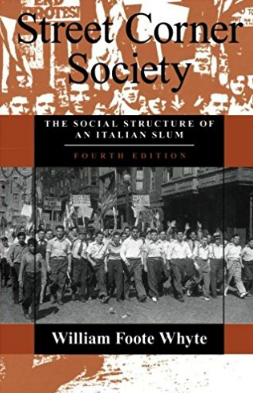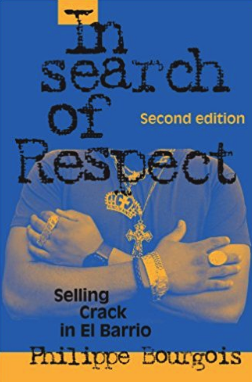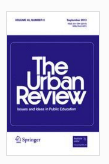Urban Youth Culture Research [Resource List]
Urban Youth Culture Research [Resource List]
by Rev. Dean Borgman, Professor of Youth Ministry
How are people of faith to understand urban youth culture? How can the Church best interact with urban youth?
This post provides qualitative research resources for the urban youth practitioner to develop a framework and approach for more effective ministry.
Current Resources
“Barking to the Choir: The Power of Radical Kinship,” by Gregory Boyle (2017)
Though not social science, Barking to the Choir offers what I call “qualitative research snapshots”. This spiritual and biblical reflection on the lives of L.A. homies illustrates what is required for effective qualitative research: time spent and trust felt. Urban researchers will see possible results of their work, as this book describes how homies from negative origins can transform into effective workers and young entrepreneurs.
“Tattoos on the Heart: The Power of Boundless Compassion,” by Gregory Boyle (2010)
Though Father Boyle is not a social science researcher, what this white, adult, professional (a priest) displays in the way relationships can provide the most "human" kind of information, and serve as a passage from gang-ridden neighborhoods to positive community development (a thriving bakery business). This book is about a God who shows up in surprising ways and places with unconditional compassion, sense of humor, strength and firmness.
This site includes description of “Community-Based Participatory Research,” “Research, Action, Activism: Urban Gathers for Third National Meeting: ‘critical solidarities and multi-scalar powers,’” and “From Youth Organizers to Social Justice Activists' Experiences of Youth Organizers Transitioning to Adulthood.”
Emmanuel Gospel Center, Boston
EGC has engaged in urban applied research in collaboration with other agencies for decades.
Resources on Economic Systems
Without understanding economic realities surrounding urban youth, we do not have a complete picture of what drives youth culture. Employment challenges and informal/underground economic systems are two of these realities. For a recent study of global informal underground economic systems, see Edgar L. Feige and Paulina Restrepo-Echavarria.
“Defining and Estimating Underground and Informal Economies: The New Institutional Approach,” by Edgar L. Feige (10 Jun 16)
“Measuring Underground Economy Can Be Done, but It Is Difficult,” by Paulina Restrepo-Echavarria (Jan 2015)
Classic Resources
Article: “The Code of the Streets,” by Elijah Anderson (May 1994), The Atlantic
Understanding the influences, behaviors, and motives of urban communities and their youth has been greatly furthered by the work of African-American sociologist Elijah Anderson, Professor at the University of Pennsylvania (and now Yale). Anderson’s work is must-reading for urban street workers and should be understood by all serving urban neighborhoods. It is worth quoting from this insightful article:
“Of all the problems besetting the poor inner-city black community, none is more pressing than that of interpersonal violence and aggression…. The inclination to violence springs from the circumstances of life among the ghetto poor—the lack of jobs that pay a living wage, the stigma of race, the fallout from rampant drug use and drug trafficking, and the resulting alienation and a general lack of hope for the future.”
Code of the Street: Decency, Violence, and the Moral Life of the Inner City by Elijah Anderson (1999)
Anderson’s book further builds on his 1994 article and describes the details of the code of the streets that so strongly influences inner-city life. Inner-city youth come out of their apartments to “Win-Win/Lose-Lose” street situations… as part of a “zero-sum game.” They are forced into a “campaign for self-respect,” where “juice” (or power over others) are crucial. Code of the Street details the bigger picture—the systemic context for what average citizens see as a stereotype of urban lives from the evening news.
Streetwise: Race, Class and Social Change in an Urban Community by Elijah Anderson (1990)
Anderson’s earlier book, Streetwise, is a careful analysis of social neglect and intrusion (gentrification) in urban life.
Street Corner Society: The Social Structure of an Italian Slum by William Foote Whyte (1993)
Back in the late 1930s William F. Whyte, on a fellowship from Harvard, lived in Boston’s North End. As an early social scientist he attempted to describe life in that Italian-American community of first-and second-generation immigrants. First published in 1943, it was entitled Street Corner Society: The Social Structure of an Italian Slum. Whyte’s work is important to us as it pioneered what he described as “participant observer research,” and provides a foundation for systems thinking ministry.
Street Corner Research: An Experimental Approach to the Juvenile Delinquent by Ralph K. Schwitzgebel (1993)
Also coming out of Harvard and influenced by the work of William Whyte is Ralph Schweitzgebel’s Streetcorner Research: An Experimental Approach to the Juvenile Delinquent. Its considerations of qualitative research emphasizes the importance of genuine relationships for urban study of youth, and describes delinquency as having a variety of psychological and sociological causes.
Ain’t No Makin’ It: Aspirations & Attainment in a Low-Income Neighborhood by Jay MacLeod (1995)
Any urban program using interns, and certainly urban interns themselves, should be interested in the story of three students wandering into an urban housing project seeking to set up a youth program.
Working with youngsters in a poor neighborhood for several summers, the author decided to write his undergraduate thesis on the occupational aspirations of two contrasting cliques of older teenagers in the project—the Hallway Hangers and the Brothers: “I immersed myself in their peer cultures for a year and tried to understand the two groups from the inside. Exploring their aspirations led me into a thicket of enduring social issues about the nature of poverty, opportunity, and achievements in the United States.” MacLeod’s book continues to be a classic sociology text.
In Search of Respect: Selling Crack in El Barrio by Philippe Bourgois (1995)
A study emphasizing the importance of urban economics is Philippe Bourgois’ “In Search of Respect: Selling Crack in El Barrio”. This anthropologist and urban researcher moved into Spanish Harlem, NYC, and established long-term friendship and trust with Puerto Rican, street-level drug dealers... spending many a night in crack havens. “I was interested in the political economy of inner-city street culture…. I wanted to probe the Achilles heel of the richest industrialized nation in the world by documenting how it imposes racial segregation and economic marginalization on so many of its Latino/a and African-American citizens.”
Our America: Life and Death on the South Side of Chicago, by LeAlan Jones and Lloyd Newman with David Isay (1997)
Community programs hoping to use youthful residents for urban research can learn from Jones and Newman, two young teenagers who retrieve a story about the incomprehensible dropping of a five-year-old boy from a 14th floor window by 10-and 11-year old kids because he wouldn’t steal candy for them. With transistor recorders and some coaching from Isay, these teens collected what can be considered informal, qualitative research for two years—when they were thirteen and fourteen years old. Reading their report allows for a better understanding of inner-city values and attitudes.
“Constructing Meaning About Violence, School, and Community: Participatory Action Research with Urban Youth,” by Alice McIntyre (2000), The Urban Review, Vol.32, No.2, 2000.
A scholarly article describing how a group of adolescents were equipped to study and report on “a toxic environment, limited social services, poverty, crime, drugs, and inadequate educational resources.”
Final Note: Most of the above suggest going beyond relief and incarceration and even prevention to community development. But few go as far as to suggest what needs to be changed in the realm of what might be called systemic injustice, which includes racism and classism.





















